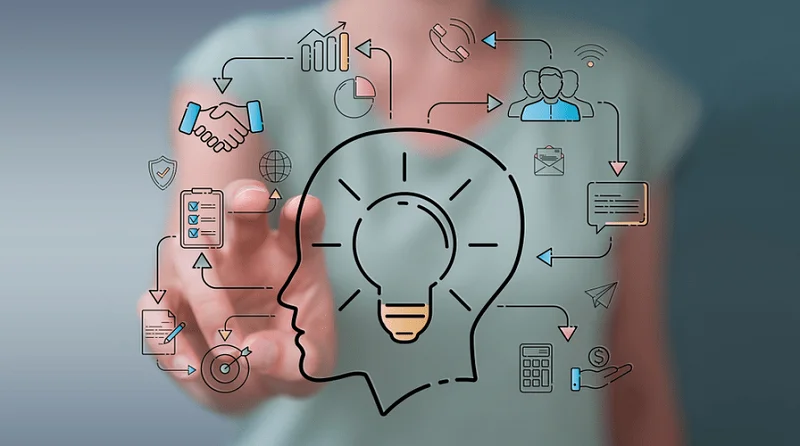Executives use ESS to make effective decisions through summarized internal data taken from DSS and MIS and external sources. In addition, executive support systems help monitor performances, track competitors, spot opportunities, and forecast future trends. CRM software is similar to ERP, but as its name implies, it’s focused on customer data. Any details about your customers examples of enterprise information systems can be entered into the CRM system, which is made available to anyone else in your business. Personal contact information for different people at the customer’s organization can all be stored, as well as buying history, complaints and returns. Once this data is entered, the CRM system can be used to forecast sales and help you pinpoint marketing opportunities.

All of these events are processed using a transaction processing system. They need to schedule staffing for their store, keep track of deliveries of new books and keep track of the finances. A store manager will use one or more management information systems for these tasks. CRM-system – a concept of management active relationships with customers.
A Comprehensive Guide to XaaS: 10 Types of Business Services Reimagined
Next, the management level has the management information systems (MIS) and decision support systems (DSS), and we conclude with the executive support systems (ESS) at the strategic level. Let’s explore the different types of information systems more in-depth. Enterprise information systems provide a technology platform that enables organizations to integrate and coordinate their business processes on a robust foundation. Mid- and upper-level managers rely on a variety of information systems to support decision-making activities, including management information systems, decision support systems, executive support systems, and expert systems. The company has a number of stores, and so it also has more senior managers who need to make sure the entire chain keeps running smoothly. This includes tasks like the logistics of shipping books from a warehouse to the stores, keeping track of inventory and sales, and managing personnel.

Default assigned discounts off lists or markups with diverse costing formulas so correct prices are connected to clients based on their tier as they produce their quotes or orders. Log full machinery and equipment history at all clients’ sites and search for available repair parts in stock. Transfer historical information from accounts payable and receivable on a legacy system to this solution with ease. Manage integrated info tiles into work areas to supervise operations, track transaction progress and detect issues and exceptions that may need addressing.
What Are the Main Applications of Information Technology?
Their antiquated inventory tracking system did not account for changing costs, and the accounting software could not record the metrics needed for key financial statements. These breakdowns created manual processes, which further compromised time and resources. ERP has evolved over the years from traditional software models that made use of physical client servers and manual entry systems to cloud-based software with remote, web-based access.
Instead, companies should be willing to apply best practices to their approach. Digital systems help organizations increase the efficiency of their activities, control the work of different departments better, share knowledge and enhance transparency in business processes. Enterprise software development offers great benefits to the regular workflow and elevates its productivity. A typical enterprise information system would be housed in one or more data centers, would run enterprise software, and could include applications that typically cross organizational borders such as content management systems.
Information Systems: Definition, Concepts & Examples
Transaction processing is essential to helping businesses perform daily operations. Transactions are defined as any activity or event that affects the company, and include things like deposits, withdrawals, shipping, billing customers, order entry, and placing orders. Enterprise resource planning software offers single-system solutions that integrate processes across the business. These applications allow users to interact within a single interface, share information, and enable cross-functional collaboration. Automate and link crucial procurement acquisition and approval and matching workflows to support internal controls and compliance requirements to declutter the procure-to-pay process. Set a process flow from sales quote to order fulfillment to guarantee convenient invoices and transactions.
- Automation is replacing a lot of tedious tasks with robots, but we haven’t quite reached a Westworld-esque android takeover.
- Financial value is not usually a direct outcome from the implementation of an enterprise information system.
- Information systems can improve nearly any business operation, but here are a few valuable ways you can put them to work.
- If you’re interested in pursuing a career as a cyber-security expert, Simplilearn can get you started on your new career path.
- It helps track customer communication with the help of a clear and transparent display of all ongoing company processes.
To design marketing programs, for instance, marketing managers rely on summary information gleaned from a dedicated customer-relationship management system. Let’s look at some of the widely available information systems designed to support people at the operational and upper-management levels. For example, in the supply chain industry, an ERP system could automatically run a financial analysis and predict future stock needs to keep inventory at a healthy level. This process control ensures that the manufacturing department is performing at optimal capacity and in-demand products are in stock. At the same time, the CRM module could record customer data such as order history and billing information. Bursting with changes, the current business milieu has helped companies implement a varied set of advanced technologies into different processes.
Types of Enterprise Systems
Whether you are starting your first company or you are a dedicated entrepreneur diving into a new venture, Bizfluent is here to equip you with the tactics, tools and information to establish and run your ventures.

The platform is generally maintained by the company that created it, with client companies renting services provided by the platform. You can think of an enterprise resource planning system as the glue that binds together the different computer systems for a large organization. Without an ERP application, each department would have its system optimized for its specific tasks. With ERP software, each department still has its system, but all of the systems can be accessed through one application with one interface. Caesars uses another particularly interesting, and sophisticated, application of artificial intelligence.
HRM Systems
ERP software also provides total visibility, allowing management to access real-time data for decision-making. Some businesses benefit from enhanced real-time data reporting from a single source system. Accurate and complete reporting help companies adequately plan, budget, forecast, and communicate the state of operations to the organization and interested parties, such as shareholders. Businesses employ enterprise resource planning (ERP) for various reasons, such as expanding, reducing costs, and improving operations. The benefits sought and realized between companies may differ; however, some are worth noting. Then, the hosting company loads the applications onto the server the client is renting, and both parties begin working to integrate the client’s processes and data into the platform.
That’s why a Caesars manager can greet a preferred customer at the door with his favorite drink and a personalized greeting, such as “Hi, Bill! Our next ERP software example is a comprehensive cloud software that prides itself on addressing all business processes within one system, eliminating the need for https://www.globalcloudteam.com/ related applications. BizAutomation caters to small to medium-sized businesses in the wholesale, retail, e-commerce, services, distribution and manufacturing industries. ERP software is a large suite of integrated applications that manage everyday business processes and automate back-office functions.
What Are the Types of ERP?
ECM-system presents a basic infrastructure and technical architecture to support the life cycle of an unordered information (files) of various types and formats. ECM consist of applications that can interact with each other, as well as being used and sold as a separate products. These tools typically use programming languages such as JavaScript, HTML, or PHP. Collect and analyze data to help define project scope and requirements, build predictive models, and improve business planning. When he’s not at his desk, you’ll find him at a music festival, thrifting, or spending time with his friends and family.











